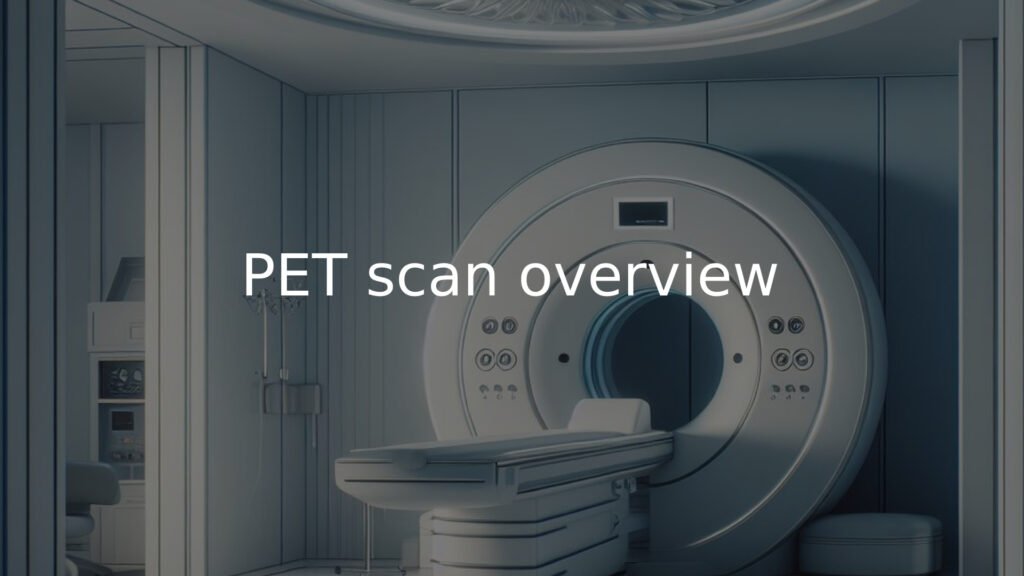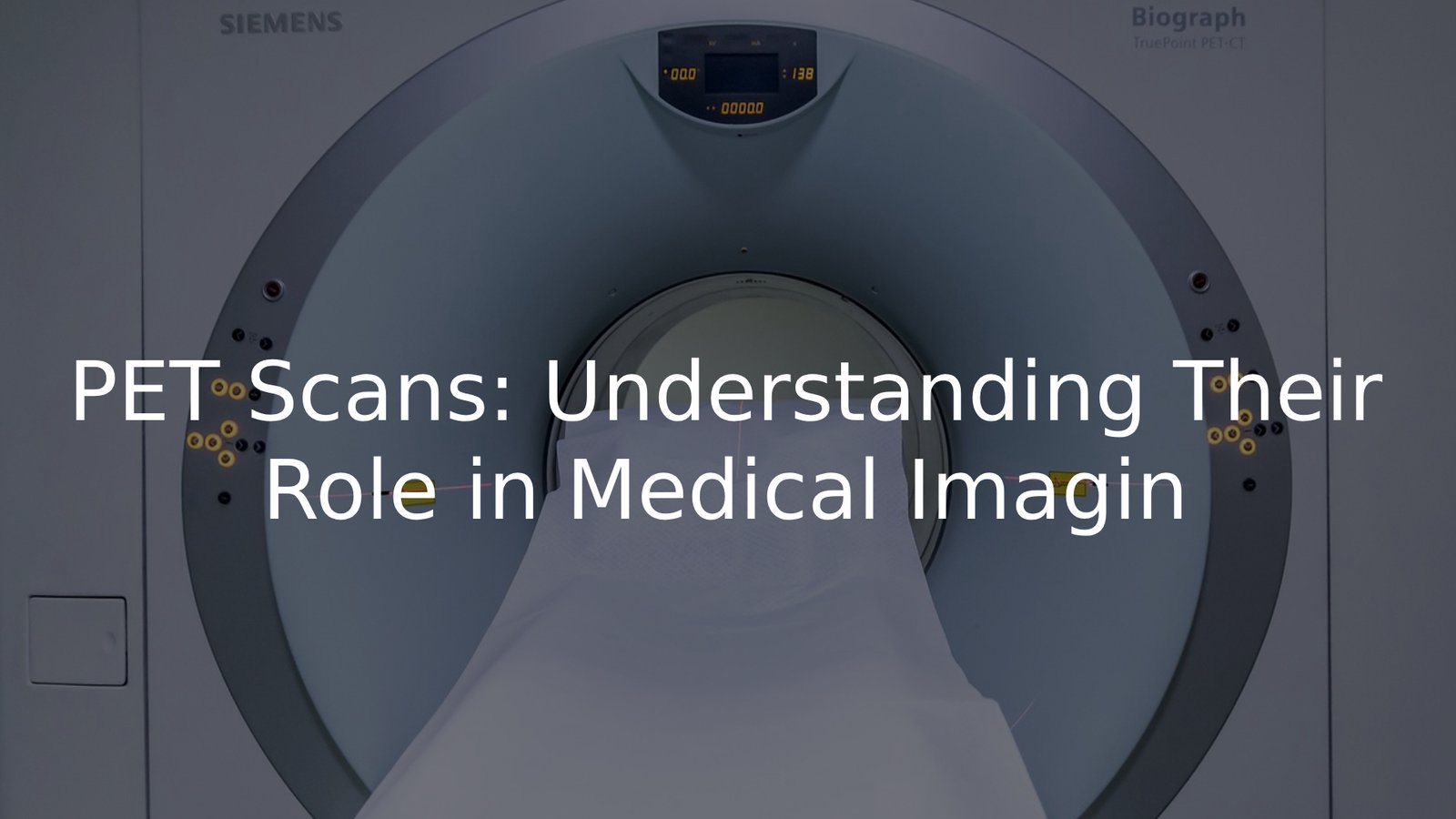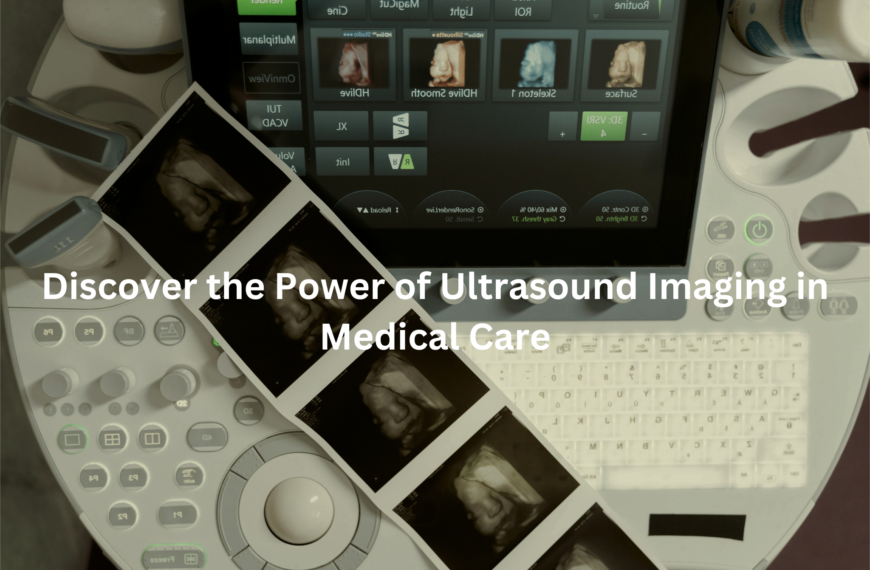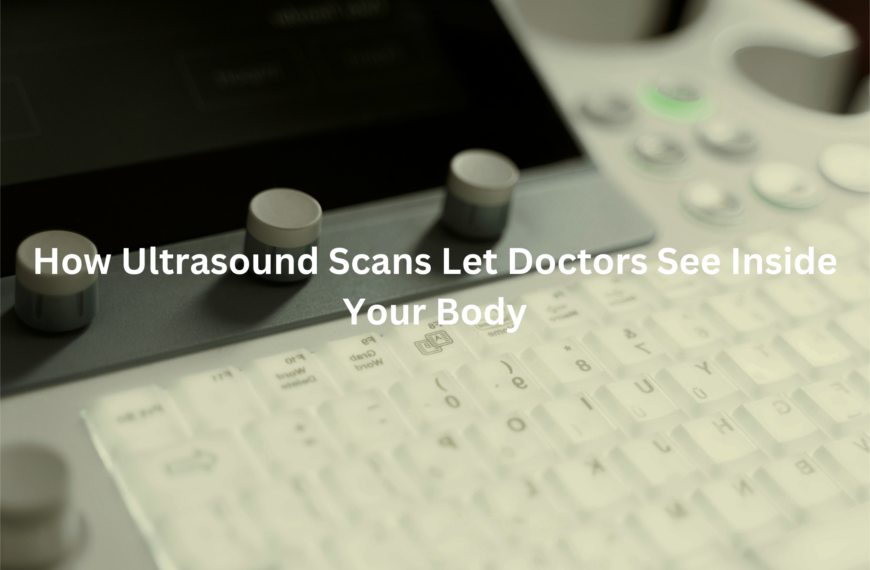Learn how PET scans help detect various diseases and what to expect during the process.
PET scans are a key tool in medical imaging, helping doctors look inside the body to understand what’s happening in organs and tissues. They’re particularly useful for detecting conditions like cancer or heart disease early.
The technique used is called positron emission tomography, which may sound technical, but it’s simply a way to observe how the body’s cells are functioning. Whether it’s for diagnosis or monitoring treatment, PET scans provide essential insights. Want to know more about how these scans work and what they can uncover? Keep reading to find out!
Key Takeaway
- PET scans show how organs and tissues work.
- They’re helpful for finding cancer and heart problems.
- Preparing for a PET scan is simple and quick.
PET scan overview

Positron Emission Tomography (PET) scans are advanced imaging tools that help doctors examine how organs and tissues are functioning. A small amount of radioactive tracer is injected into the body, which allows the scanner to create detailed images showing where the tracer travels. This technique is especially useful for detecting conditions such as cancer, heart disease, and neurological disorders.
Key Aspects of PET Scans:
- Procedure: A radioactive tracer is injected into a vein, usually in the arm. After a short waiting period, the patient lies on a table that moves through the scanner, which detects the emitted radiation and creates detailed images.
- Preparation: Patients are typically asked to fast for a few hours before the scan. Specific instructions may vary based on the area being examined and the patient’s medical history.
- Duration: The entire process generally takes around two hours, including preparation time.
- Safety: PET scans are considered safe. The radioactive tracer used is in a small amount and is eliminated from the body quickly. However, patients should inform their healthcare provider if they are pregnant or have any allergies.
PET scans are an essential tool in modern healthcare, offering crucial insights into the body’s metabolic processes and helping with accurate diagnosis and treatment planning. (1)
PET for cancer
Cancer is a serious illness, and early detection is essential for effective treatment. PET scans are crucial in finding cancer at its earliest stages and checking if it has spread to other parts of the body, known as metastasis.
How PET Scans Detect Cancer:
- Radioactive Glucose: A special type of radioactive glucose is injected into the body. Cancer cells use more energy than normal cells, so they absorb more of the glucose. This makes the cancer cells light up on the scan images.
- Imaging Process: The PET scanner picks up the radiation emitted by the glucose, creating detailed images that highlight areas with higher metabolic activity, often indicating the presence of cancer.
- Assessing Metastasis: PET scans can show if cancer has spread to other areas, which helps doctors determine the stage of cancer and plan the best treatment.
Using PET scans in cancer diagnosis helps doctors detect and monitor the disease more accurately, leading to better treatment decisions.
PET/CT hybrid imaging
Credits: Siemens Healthineers
In modern medicine, combining Positron Emission Tomography (PET) with Computed Tomography (CT) is a standard practice, known as PET/CT hybrid imaging. This combination offers a comprehensive view of both the function and structure of the body, improving diagnostic accuracy and treatment planning.
Key Features of PET/CT Hybrid Imaging:
- Functional and Anatomical Imaging: PET scans show metabolic activity, while CT scans provide detailed images of the body’s structure. Together, they allow doctors to pinpoint abnormalities more accurately.
- Improved Diagnostic Accuracy: Studies have shown that PET/CT imaging enhances diagnostic precision compared to using either PET or CT alone, particularly when detecting and locating cancers.
- More Efficient for Patients: By combining both scans into a single session, PET/CT reduces the need for multiple appointments, making the process more convenient for patients.
PET/CT hybrid imaging provides a more complete and precise assessment of health conditions, offering better insights for doctors to guide treatment decisions.
Radioactive tracers
Positron Emission Tomography (PET) scans are crucial in modern medicine, providing detailed insights into the body’s functions. At the heart of this process are radioactive tracers, typically a form of radioactive glucose, which highlight areas with high metabolic activity, such as cancer cells.
Key Aspects of Radioactive Tracers in PET Scans:
- Functionality: The radioactive glucose is injected into the body, where it collects in areas with increased metabolic activity. This allows the PET scanner to identify and highlight these regions, helping to detect abnormalities.
- Safety: The radiation used in PET scans is minimal and generally considered safe. However, it’s important to inform your doctor if you have any allergies or have had reactions to contrast materials. While allergic reactions to the tracer are rare, they can occur, with symptoms such as itching, hives, or, in severe cases, difficulty breathing.
- Preparation: You may be asked to avoid eating or drinking for several hours before the scan, with specific instructions based on the area being examined.
PET scans are an invaluable tool in diagnosing, planning treatments, and monitoring various health conditions.
Preparing for PET scans
Getting ready for a PET scan is simple. To ensure the best results, patients are usually advised to:
- Fasting: Avoid eating for a few hours before the scan.
- Hydration: Drink plenty of water to help flush any remaining tracer from the body.
When it’s time for the scan, patients lie on a narrow table, and the whole process typically takes around 30 minutes. During the scan, the PET scanner picks up the radioactive tracer, creating detailed images that help doctors assess how organs are functioning and detect any abnormalities.
Following these preparation steps helps ensure the scan is accurate and makes the whole process go smoothly. (2)
PET scans vs CT
PET and CT scans are distinct imaging techniques that each provide valuable information, but when used together, they offer a comprehensive view of both the body’s structure and function.
Key Features of PET and CT Scans:
- CT Scans: These scans use X-rays to produce detailed images of the body’s internal structures, such as bones and organs. They’re particularly helpful in detecting issues like broken bones or tumours.
- PET Scans: PET scans involve injecting a radioactive tracer that highlights areas of high metabolic activity, like cancer cells. This helps doctors observe how organs and tissues are functioning.
Benefits of Combining PET and CT:
- Enhanced Diagnostic Accuracy: By combining the images from both scans, doctors can precisely locate abnormalities, improving diagnostic accuracy.
- Better Treatment Planning: A complete view of both structure and function allows for more effective treatment strategies, especially in cancer care.
- Increased Patient Convenience: By conducting both scans in one session, the process is quicker and more convenient for patients.
Together, PET and CT scans provide a fuller picture of health, helping doctors make more informed decisions.
PET results explained
After a PET scan, doctors carefully review the images to identify areas where the radioactive tracer has accumulated. Increased uptake of the tracer often indicates higher metabolic activity, which could point to health issues like cancer.
Understanding PET Scan Results:
- Standardised Uptake Value (SUV): This measures the concentration of the tracer in specific areas. Higher SUV values might suggest heightened metabolic activity, potentially linked to cancer. An SUV greater than 15 is often considered highly intense and may require further investigation.
- Interpretation Challenges: Non-cancerous conditions can also show high metabolic activity, leading to false positives. Similarly, some cancers might not be detected on PET scans, resulting in false negatives.
Next Steps:
- Consultation: Doctors will explain the results to the patient, discussing what they mean for further treatment options.
- Further Testing: If necessary, additional tests may be recommended to confirm the diagnosis and determine the best course of action.
Understanding PET scan results is vital in planning the right care and ensuring informed treatment decisions.
PET scan benefits
PET scans offer numerous benefits in medical diagnostics, particularly in the early detection of diseases and monitoring treatment progress. By identifying conditions at their early stages, PET scans enable timely interventions, which are crucial for effective treatment. They also help doctors assess how well a treatment is working, making it possible to adjust the plan if needed.
Key Benefits of PET Scans:
- Early Disease Detection: PET scans are effective at spotting diseases, including various cancers, in their early stages, allowing for prompt and more effective treatment.
- Treatment Monitoring: They help doctors evaluate the effectiveness of treatments, providing essential information to adjust the plan if necessary.
- Versatility in Disease Detection: PET scans are not just for cancer; they are also useful in identifying other conditions such as heart disease and neurological disorders.
Incorporating PET scans into medical practice helps detect, diagnose, and monitor a range of health conditions, leading to more informed and effective treatment decisions.
Oncology imaging PET
In oncology, PET scans play a crucial role in tracking cancer progression and evaluating the effectiveness of treatments. By detecting areas of increased metabolic activity, PET scans provide a clear view of how cancer is behaving, which helps doctors plan the next steps in treatment.
Key Benefits of PET Scans in Cancer Care:
- Monitoring Treatment Response: PET scans allow doctors to assess how well a treatment is working and make adjustments if needed.
- Evaluating Tumour Metabolism: PET scans can differentiate between benign and malignant growths, even when other imaging methods like CT or MRI may not provide a clear answer.
- Detecting Metastasis: PET scans help detect if cancer has spread to other parts of the body, providing valuable information for accurate staging and treatment planning.
By using PET scans, doctors can make more informed decisions about cancer treatment, leading to better outcomes for patients.
PET scan accuracy
PET scans are generally very reliable in detecting cancer recurrence and monitoring the effectiveness of treatments. However, they are not without limitations. Occasionally, false positives can occur, where the scan indicates an issue, such as cancer, that isn’t actually present. This can happen due to other factors, like infections or inflammation, which can cause increased metabolic activity and lead to a false reading.
Key Points to Consider:
- False Positives: Conditions like infections or inflammation can cause the body to show heightened metabolic activity, resulting in false positives on a PET scan.
- Combining Tests for Accuracy: To ensure a more accurate diagnosis, doctors often combine PET scans with other imaging tests, such as CT or MRI. This helps confirm the findings and reduce the chance of misdiagnosis.
By combining PET scans with other tests, healthcare professionals can ensure they have the most accurate information to make the best decisions for patient care.
Conclusion
In conclusion, PET scans are a vital tool for doctors, offering valuable insights into what’s happening inside the body. Whether it’s detecting cancer or monitoring treatment progress, PET scans play a crucial role in understanding and managing health.
By providing detailed images of organ activity, they assist in diagnosing conditions and evaluating treatment effectiveness, ultimately helping doctors make informed decisions for better patient care.
FAQ
What is positron emission tomography (PET) and how does it work?
Positron emission tomography (PET) is a type of medical imaging technique that helps doctors see how organs and tissues are working inside the body. PET scans use a radioactive tracer, typically a radioactive glucose molecule, to detect areas with high metabolic activity, such as cancer cells or brain tissue. The scanner picks up gamma rays emitted by the tracer, creating detailed images of the body’s internal processes.
What are PET scans used for in medical diagnosis?
PET scans are used to detect a variety of medical conditions, including cancer, cancer metastasis or recurrence, and brain disorders like issues with brain metabolism. They are also helpful for evaluating heart muscle health in patients with heart disease. PET scans provide images of metabolic activity, giving doctors a clear picture of how different organs are functioning.
Are there any risks associated with PET scans?
Although PET scans use a small amount of radiation, the effective radiation dose is low, and the levels of radiation are generally considered safe. However, it’s important to be mindful of radiation exposure, especially for those who may need repeated scans. Doctors aim to minimise risks by using the lowest possible dose of radiation during each scan.
How is the radioactive tracer used in PET scans?
A radioactive tracer, often in the form of radioactive glucose, is injected into the patient before the scan. The radioactive glucose highlights areas of high metabolic activity, such as cancer cells. Once injected, the tracer moves through the body, and the PET scanner detects the emitted gamma rays, creating 3D images of how organs and tissues are functioning.
How does PET scanning help with heart disease?
In heart disease, PET scanning can assess the function of the heart muscle. It helps doctors understand how well blood is flowing to the heart and identify areas with reduced blood supply, which may indicate blockages. PET scans provide detailed images of the heart’s metabolic activity, aiding doctors in evaluating the severity of heart conditions and determining the best treatment options.
References
- https://www.healthdirect.gov.au/pet-scan
- https://www.betterhealth.vic.gov.au/health/conditionsandtreatments/pet-scan




